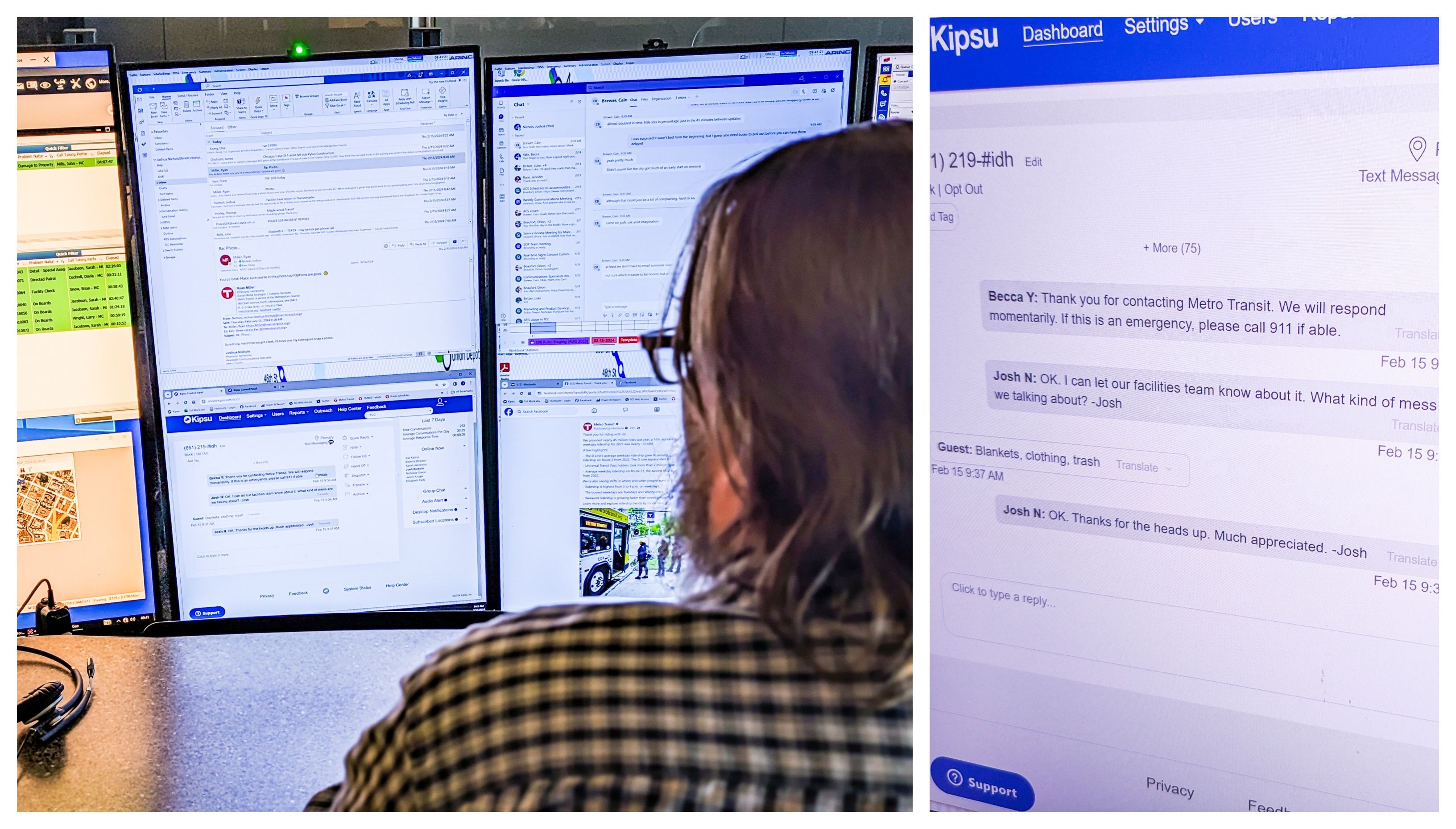
If you're on transit and need to report an emergency or in-progress crime, you should call or text 911 right away.
If you feel unsafe, see something that just doesn't look right, or want to report a problem like broken glass, you can use our Text for Safety service and receive a nearly immediate response from someone in our Transit Control Center. The information you share with us through Text for Safety can be passed on to police dispatchers, facilities staff, or others for appropriate response.
To use Text for Safety, all you have to do is text 612-900-0411. As Text for Safety use grows (we had more than 10,000 conversations through the service in 2024) it's helpful to understand what information we need to respond as quickly and effectively as possible.
Here are several important things to keep in mind when texting in:
Where?
Your location is the single most important piece of information. If you're on light rail, let us know the three-digit train car number, which can be seen on bright red decals posted inside the train. If you can't locate the train car number, let us know where you are and which direction the train is headed.
If you're on a bus, let us know the vehicle number, which most often can be found toward the front of the bus toward the ceiling. The bus route and direction the bus is headed is also helpful, but we can find that information quickly via the vehicle number.
Otherwise, let us know where the issue is at using the stop identification number located on stop and station signage or the nearest intersection.
What?
As concisely and clearly as possible, let us know what is happening. Is there verbal or physical altercation going on? Does someone need medical help? Are people smoking drugs or cigarettes?
Who?
Let us know what the people involved look like, including as much details as possible so officers can easily identify them when they arrive or so staff monitoring security cameras can locate them on camera. This generally includes race, gender, age and clothing details/colors. You can also include other identifying information, such as hair color or hairstyles, items they are carrying, tattoos, etc.
It is important to get detailed descriptions of those involved. We will often hear, "It's the people smoking" or something similar. The problem with that is most times the illegal behavior stops as soon riders realize police are about to arrive. Your descriptions and other details help officers identify the people involved even if the behavior stops before police arrive.
Follow-up questions
We will often ask follow-up questions. This does not slow down police/medical response because once we put a call through our Computer-Aided Dispatch (CAD), our dispatchers will relay all pertinent information to responding personnel, allowing the call taker to continue adding more details to the call as needed.
Other questions we may ask, depending on the type of incident, include whether any weapons have been seen or if a person is breathing normally.
If you’ve ever used Text for Safety on light rail, you’ve been asked what train car you were riding in. It’s easier than...
Posted by Metro Transit on Monday, April 1, 2024